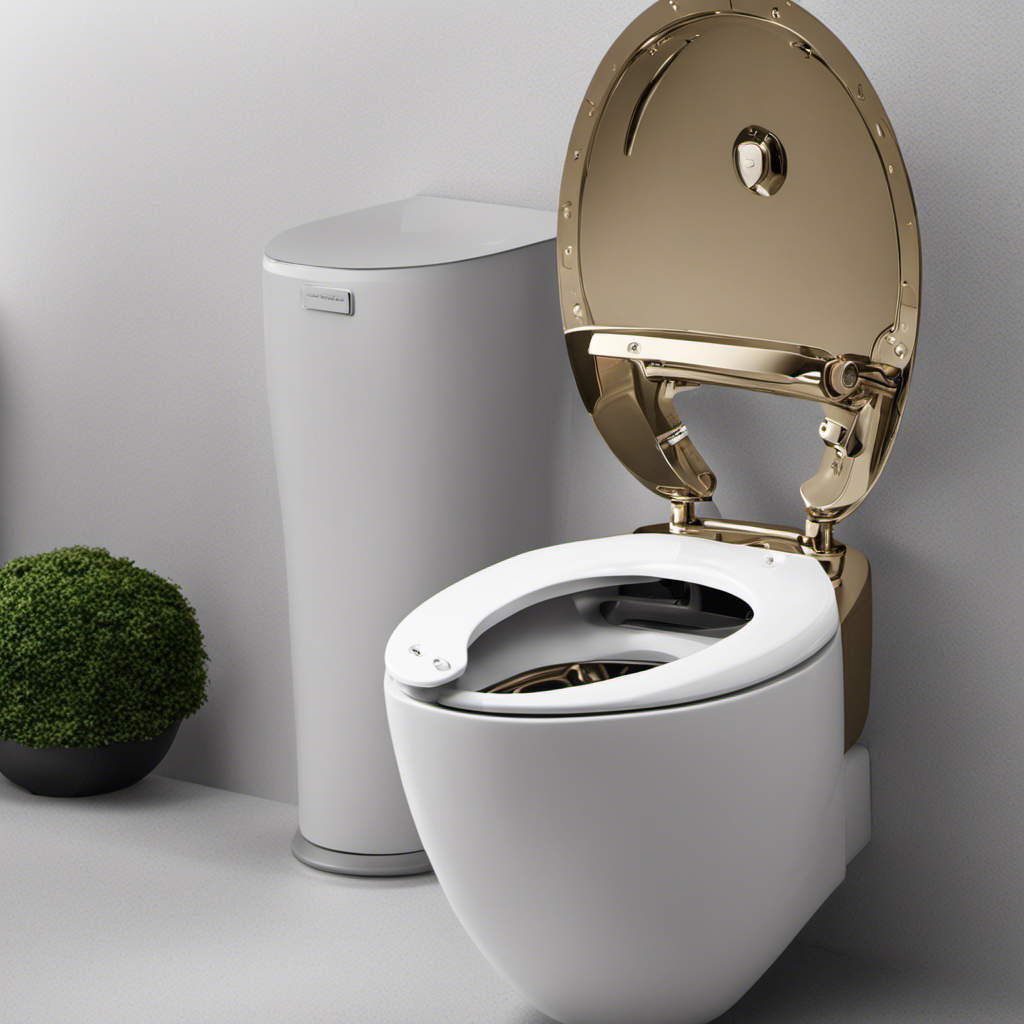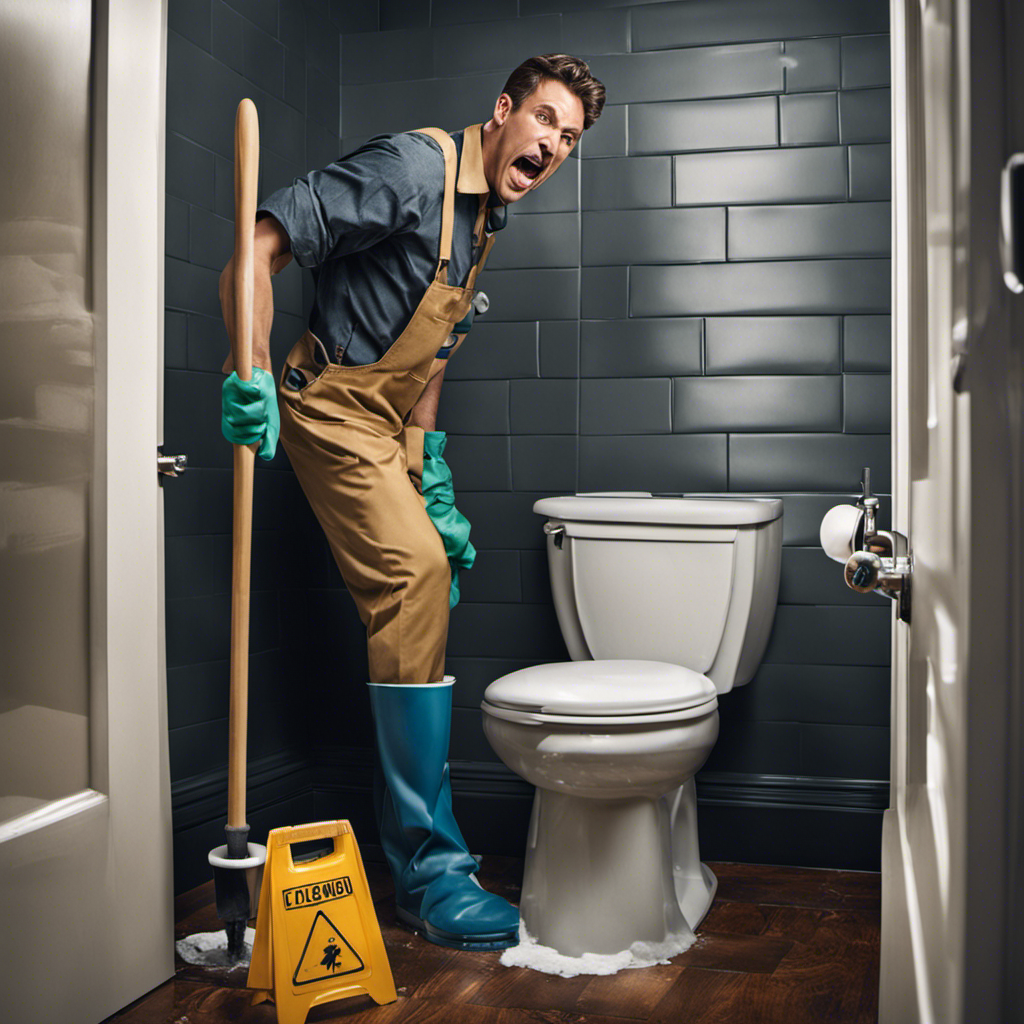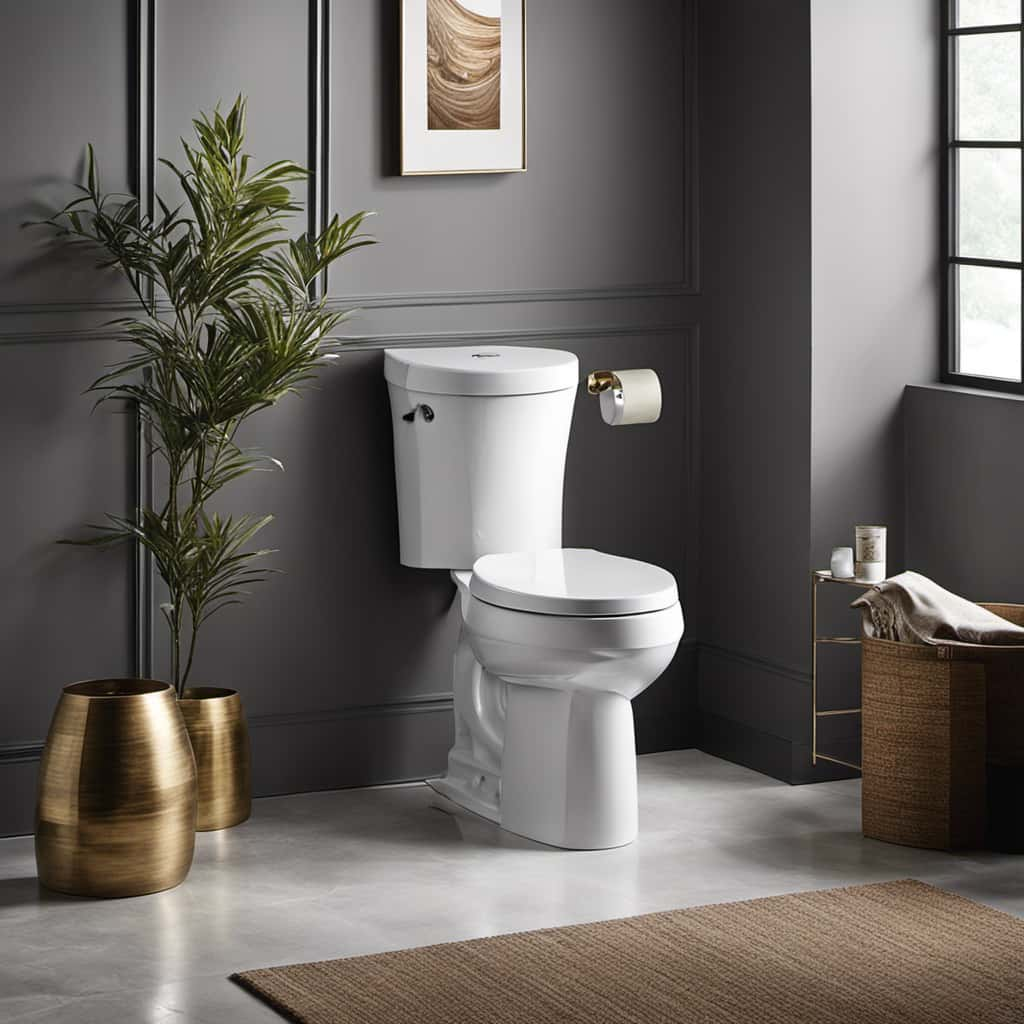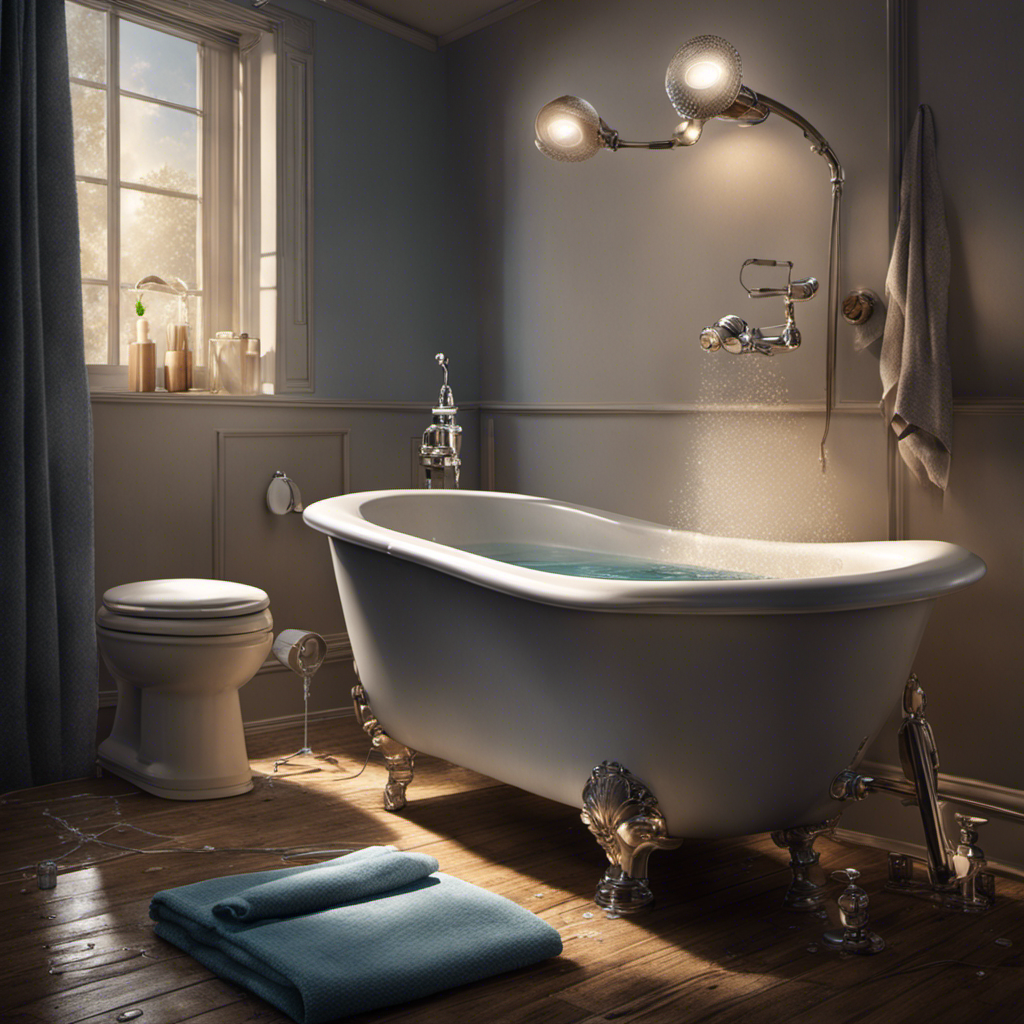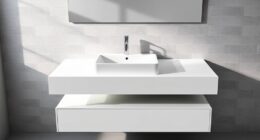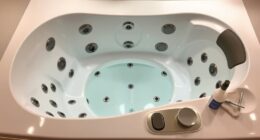So, you’re curious about how a bidet toilet seat works? Well, let me tell you, it’s quite a fascinating piece of bathroom technology.
With its advanced features and innovative design, a bidet toilet seat offers a whole new level of cleanliness and comfort.
In this article, I’ll break down the history, components, and functionality of a bidet toilet seat, as well as the benefits and considerations of using one.
Get ready to have your bathroom experience revolutionized!
Key Takeaways
- Bidet toilet seats were first introduced in the 1960s and gained popularity in Japan as a hygienic alternative to toilet paper.
- Bidet toilet seats offer advanced features such as adjustable water pressure, temperature control, and nozzle positioning for personalized comfort and cleaning.
- Regular cleaning and maintenance of bidet toilet seats are important to ensure optimal performance and hygiene.
- Using a bidet toilet seat provides a more hygienic and comfortable experience, reduces the risk of irritation and infection, and has positive environmental impacts by reducing toilet paper usage and water consumption.
History of Bidet Toilet Seats
If you’re curious about the history of bidet toilet seats, you might be surprised to learn that they were first introduced in the 1960s.
Bidet toilet seat technology has come a long way since then, with advancements in design and functionality. Initially, bidet toilet seats were mainly found in Japan, where they were widely embraced as a more hygienic alternative to traditional toilet paper.
However, over time, bidet toilet seats have gained popularity in many other countries as well, with cultural perspectives shifting towards a greater appreciation for their benefits.
Today, bidet toilet seats offer features such as adjustable water pressure, temperature control, and even built-in air dryers. They provide a luxurious and comfortable experience while promoting cleanliness and personal hygiene.
Components of a Bidet Toilet Seat
The components of a bidet toilet seat include water jets, a control panel, and a heated seat. These components work together to provide a hygienic and comfortable experience.
The water jets, located at the back of the seat, are responsible for spraying a gentle stream of water to cleanse the user after using the toilet. The control panel allows the user to adjust the water pressure, temperature, and direction of the jets.
The heated seat feature ensures that the user is comfortable during their bathroom routine.
When it comes to installation, bidet toilet seats are generally easy to install. They can be attached to most standard toilets, requiring only a few basic tools and a bit of time.
Overall, bidet toilet seats offer a convenient and effective solution for maintaining proper toilet hygiene.
Water Flow and Pressure Control
Water flow and pressure can be adjusted easily using the control panel on a bidet toilet seat. The water temperature control allows you to choose the perfect temperature for your comfort. By simply turning a dial or pressing buttons, you can increase or decrease the water temperature to your desired level. This feature ensures that you have a pleasant and soothing experience every time you use the bidet toilet seat.
Additionally, the nozzle positioning can be adjusted to ensure proper cleaning. Some bidet toilet seats have a self-cleaning nozzle feature, which automatically cleans the nozzle before and after each use. This ensures optimal hygiene and prevents the buildup of bacteria.
With the ability to control water flow, pressure, temperature, and nozzle positioning, bidet toilet seats offer a customizable and personalized cleansing experience.
Cleaning and Maintenance of Bidet Toilet Seats
To keep your bidet toilet seat clean and functioning properly, regularly clean the nozzles and ensure that there is no buildup of debris or residue. Here are some cleaning techniques and troubleshooting tips to help you maintain your bidet toilet seat:
-
Cleaning Techniques:
-
Use a mild soap and water solution to clean the nozzles and other surfaces of the bidet seat.
-
Avoid using harsh chemicals or abrasive cleaners, as they can damage the sensitive components of the bidet.
-
Troubleshooting Common Issues:
-
If the water pressure is low, check if there is any blockage in the water supply line or the nozzle.
-
In case of a clogged nozzle, try using a pin or needle to clear the blockage.
Regular cleaning and maintenance of your bidet toilet seat will ensure optimal performance and hygiene.
Now, let’s explore the benefits and considerations of using a bidet toilet seat.
Benefits and Considerations of Using a Bidet Toilet Seat
Using a bidet toilet seat can provide a more hygienic and comfortable experience compared to traditional toilet paper. Not only does it cleanse you more thoroughly, but it also reduces the risk of irritation and infection. Bidet toilet seats use water to clean, which is more gentle on sensitive areas and avoids the abrasive nature of toilet paper. This can be particularly beneficial for individuals with certain health conditions, such as hemorrhoids or urinary tract infections.
Moreover, bidet toilet seats have a positive environmental impact. By reducing the use of toilet paper, they help to decrease deforestation and reduce waste production. Additionally, they lower the consumption of water compared to traditional toilets, making them more sustainable and eco-friendly.
Conclusion
In conclusion, bidet toilet seats are a revolutionary bathroom fixture that offer a hygienic and refreshing experience.
With their easy installation and user-friendly controls, bidet toilet seats have become a popular choice for those seeking a cleaner alternative to traditional toilet paper.
By providing a gentle stream of water for cleansing, these seats ensure a thorough and efficient cleaning process.
So, why not take the plunge and give your bathroom a modern upgrade?
It’s time to leave behind the old ways and embrace the refreshing wave of bidet toilet seats.
